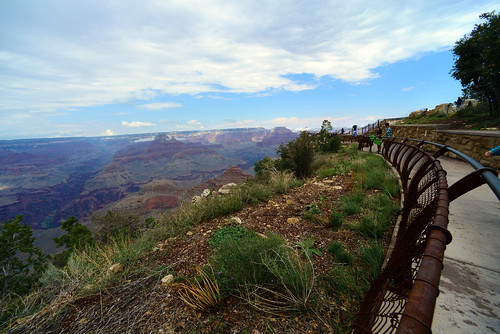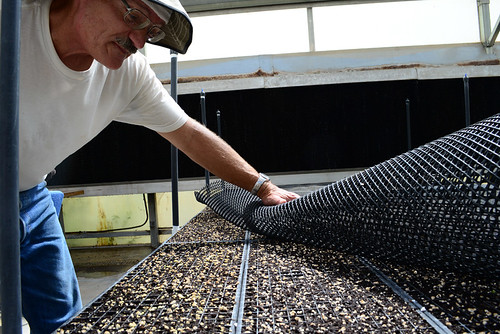
For more than 20 years, USDA’s Natural Resources Conservation Service (NRCS) has been growing seeds for the Grand Canyon National Park and other national parks.
When the National Park Service renovated the Grand Canyon’s South Rim visitor center in 2008, they looked to the NRCS Plants Materials Center in Los Lunas, N.M. to produce the seed needed to restore native grasses in the area.
Now, driving along eight miles of twists and turns of the South Rim, you can see the bright green grasses surrounding the parking lots, roads, and popular viewpoints including Prima Point, Hermit’s Rest and the Bright Angel Trailhead.
“Where you don’t have native grasses put in, you would have invasive weeds coming through,” said Janice Bosco, park horticulturalist with the National Park Service. “The native grasses grown by NRCS also give elk and deer some nice food.”
In national parks across the West including Zion, Arches, Canyonlands and the Grand Canyon, the Park Service uses seed from the Plant Materials Center in Los Lunas to restore disturbed areas where roads, trails, walkways and parking lots have been added or removed.
But finding and growing the seeds isn’t easy.
Because each species of plant has developed an advanced genetic makeup specific to the cliffs, valleys and ridges of the parks, the Park Service uses seed native to that specific park area. In the long run, native plants are better able to resist damage from freezing, drought, common diseases and grazing animals like elk and deer.
The Park Service collects a small amount of those specific seeds and provides them to NRCS for planting. The Plant Materials Center starts the seed, such as blue grama, spike muhly, muttongrass and needle-and-thread and Indian ricegrass, in a greenhouse before transplanting it in a nearby field to mature.
Each planted seed will end up producing hundreds of seeds for many years. With each harvest, the seeds are processed, bagged and delivered in quantities of tens to hundreds of pounds ready to be planted by the Park Service.
In addition to supplying seeds to the national parks, the Plant Materials Center also develops new varieties of plants that are drought tolerant and combat erosion to be used for conservation projects and on public and private lands across the southwest.
“These grasses not only reduce erosion and provide food and cover for wildlife, but they also beautify the area,” said Greg Fenchel, the center’s manager.
The next task for NRCS is to replant Orphan Mine, an old mining site of the Grand Canyon used as a source of uranium from 1953 until 1972.
The Park Service is looking to reclaim Orphan Mine and the surrounding area and will be using seed from the Los Lunas Plant Materials Center.
“It is an honor for us to be a part of these replanting efforts for our national parks – some of the most beautiful places in the world,” Fenchel said.

